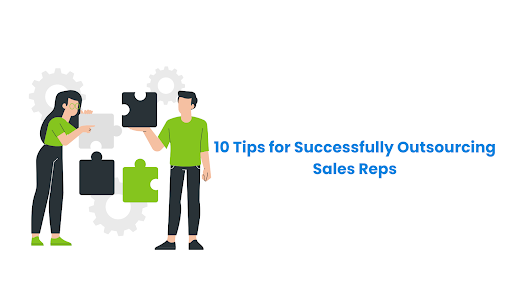10 Tips for Successfully Outsourcing Sales Reps
Outsourcing sales functions has gone from a nice-to-have to a must-have for many businesses looking to expand operations and boost revenue. The global HR outsourcing market is to grow at a CAGR of 8.69% until 2024.
With the right sales outsource partner, you can quickly scale qualified sales teams across new territories and channels without the high costs of establishing in-house teams. However, effectively leveraging outsourced sales requires careful planning and execution.
Follow these 10 tips for setting your outsourced sales team up for success:
| Benefit | Description |
| Cost-Effectiveness | Outsourcing sales reps can be more cost-effective than hiring in-house sales staff, as it eliminates expenses related to salaries, benefits, training, and onboarding |
| Scalability and Flexibility | Outsourcing provides flexibility in scaling sales operations up or down quickly based on business needs, allowing for efficient adjustments to meet changing priorities or market conditions |
| Expertise and Specialization | Outsourced sales teams bring dedicated expertise and specialized skills that can drive growth and improve sales outcomes. They focus solely on sales, allowing them to excel in driving conversions |
| Access to Technology and Tools | Outsourced sales teams often have access to advanced technology and tools that can enhance sales processes, improve data analytics, and drive better results without the need for significant internal investment. |
| Risk Reduction | Outsourcing sales operations can lower risks for companies by providing dependable performance, ensuring pipelines are consistently filled with quality leads, and offering guaranteed results in some cases. |
1. Assess Your Business Needs
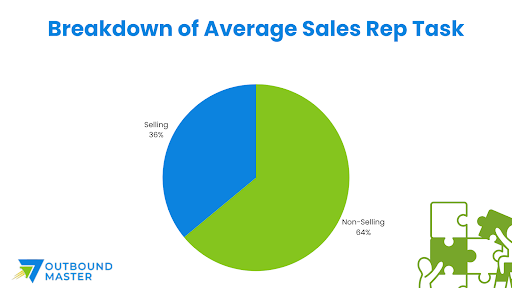
Before deciding to outsource any sales functions, it’s imperative to start by thoroughly evaluating your current sales performance, processes, and capabilities across every channel, segment, and region. Analyze historical sales data, pipeline metrics, conversion rates, profitability, and customer lifetime value by product line and customer profile.
Identify whether certain market segments, campaigns, or sales processes significantly lag in conversion rates, velocity, or profit margins compared to others. Look for patterns signaling ineffective targeting strategies, messaging, outdated tools, assignment issues, or gaps in team skill sets.
Examine which areas of the sales cycle most severely impact other stages. For example, inefficient prospecting and high lead rejection rates create bottlenecks for account executives. Failing to qualify MQLs properly creates more losses down the purchasing funnel.
Compare your sales performance benchmarks like call connect rates, opportunities sourced per rep, sales cycle length, and deal close rates against industry standards to reveal crucial capability gaps.
Pinpoint areas where outsourcing could drive maximum impact. Typical functions to outsource include:
- Lead generation – Appointment setting, email outreach, event promotion
- Demand generation – Webinars, content creation, SEO management
- Customer research – Identifying prospects, verifying data, profiling accounts
- Sales development – Qualifying inbound leads, nurturing marketing qualified leads.
- Customer support – Live chat, phone, ticketing for post-sales needs
- Data management – Entering data, cleansing databases, appending missing information
Rationalizing where to focus outsourcing investment requires a data-driven diagnosis of sales performance bottlenecks tied to growth goals. The deeper the analysis, the better outsourcing can be targeted to fill strategic gaps.
2. Set Measurable Goals
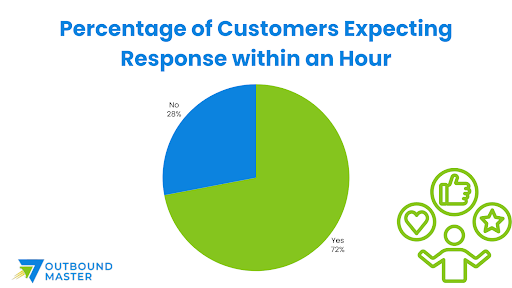
After identifying focus areas for your outsourced sales team, the next critical step is defining a clear set of objectives and key results you want them to achieve. These targets should tie directly to crucial business growth and revenue metrics in a specific, quantified manner.
For example, if sales and marketing teams have poor lead follow-up and qualification which are limiting sales opportunities, you may set these outsourcing goals:
- Increase lead to customer conversion rate from current baseline to target rate within a defined period
- Generate a monthly volume of marketing-qualified leads
- Ensure a percentage of marketed leads meet qualification criteria
If inefficient prospecting is slowing pipeline growth, key objectives could be:
- Expand the target account list by a specific number of highly ranked prospects within a set timeframe
- Schedule a target number of discovery calls with decision-makers from key accounts per month
- Reduce research time per qualified prospect from current baseline to goal
Other examples of measurable outsourced sales goals:
- Grow monthly recurring revenue by a percentage in 1 year
- Upsell a percentage of customers to premium offerings
- Onboard a defined number of new trial sign-ups per month
- Maintain a target customer satisfaction score
- Increase average deal size by a percentage year-over-year
Setting Specific, Measurable, Achievable, Relevant, and Time-bound (SMART) goals without fictional percentages provides clarity on priorities while allowing accurate tracking of outsourcing ROI. Define quantitative targets around lead volume, deal velocity, expansion revenue, and profitability metrics tied to your business objectives.
3. Find the Right Partner
Vet several outsourcing providers on key aspects like industry experience, services offered, team size and structure, locations supported, scalability, and costs.
Most importantly, assess cultural fit. Differences in communication norms, work styles, and values can sink partnerships. Have an open dialogue to determine fit.
4. Enable Seamless Communication
Schedule regular check-ins via phone, video, messaging apps, or in-person visits. Consistent, open communication builds trust and transparency.
For globally distributed teams, accommodate time zone differences when scheduling meetings. Utilize project management platforms to assign tasks, share files, track progress, and centralize interactions.
5. Design Scalable Processes
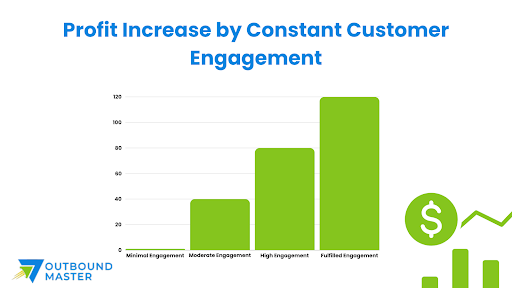
When establishing frameworks, systems, and workflows for your outsourced sales team, it’s crucial to build in adaptability and flexibility to accommodate future growth.
Analyze how your sales operations may evolve across three horizons – short-term, medium-term, and long-term projections. Factor in goals around new market expansion, product launches, customer segment penetration, channel diversification, and team expansion.
Define standardized systems for core sales tasks like call scripts, email templates, opportunity analysis frameworks, account profiling guidelines, and lead qualification processes. Ensure these validate inputs and outputs so that quality remains consistent even as new reps are onboarded.
Build playbooks with step-by-step guidance, best practices, templates, and training videos to streamline knowledge sharing across growing teams. Automate repetitive tasks like data population, customer research, and status tracking where possible using workflows, macros, and internal tools to maintain consistency at scale.
Create flexible organizational structures with clear hand-offs between sales development, account executives, and customer success. Use tiered advancement frameworks as reps progress from initial onboarding to managing complex sales cycles independently.
Implement cloud-based tools that centralize interactions, data, and insights across stakeholders to facilitate transparency and coordination. Salesforce, HubSpot, Outreach.io, Gong, and Google Workspace are popular unified platforms. Integrate these with your tech stack and quality monitoring systems.
Above all, work with outsourcing partners adept at scaling operations without compromising quality. Discuss case studies demonstrating how they expanded teams across different functions, geographies, and volumes for clients.
Building scalability into processes, tools, and organizational structures from the outset allows outsourced sales capacity to expand or contract in alignment with business needs.
6. Invest in Training
Treat outsourced reps as an extension of your team. Provide extensive onboarding on your products, customers, processes, tools, and brand voice and values. This level of training drives performance more than any other factor.
Coach reps daily in the initial months, accompanied by refresher training. Capture playbooks to streamline knowledge transfer when scaling headcount.
7. Leverage Sales Technology
Arm your outsourced team with CRMs, sales engagement platforms, business intelligence, and analytics tools required to maximize productivity.
Integrate their tech stack with yours for seamless data sharing, campaign alignment, and performance monitoring.
8. Track Meaningful Metrics
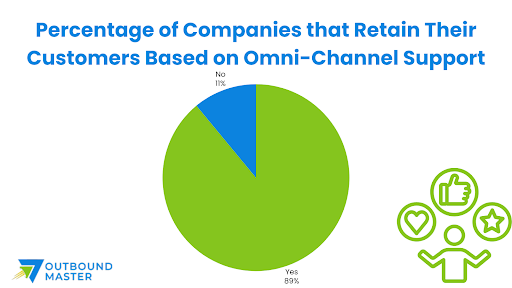
Move beyond vanity metrics like the number of calls made. Work backward from your goals to identify and monitor indicators tied to revenue and profitability, like:
- Sales pipeline generated
- Qualified opportunities sourced
- Win rates by product/segment
- Customer lifetime value
- ROI by acquisition channel
Continuously review performance data to spot lags, iterate tactics, and showcase successes.
9. Maintain an Open Partnership
Treat your outsourcing provider as a trusted partner, not just a vendor. Set expectations, communicate with transparency, provide constructive feedback regularly, and collaborate to overcome obstacles.
Partners invested in your success will go the extra mile during crises and growth peaks. Their insights can lead to impactful innovations.
10. Plan for the Long Term
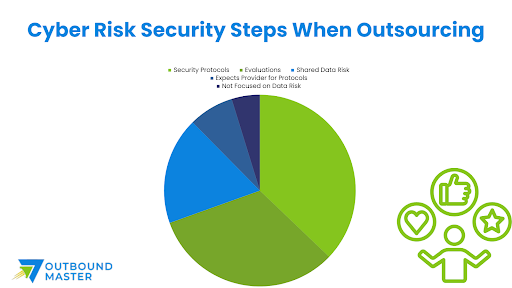
The most successful outsourcing arrangements take a strategic, long-term perspective spanning years. When designed effectively, outsourced sales can become a highly flexible, cost-efficient business growth engine. Make sure data risk and security are upheld in the long term.
Discuss market trends with your provider to tailor solutions for both current and future needs. Revisit outsourcing scope as objectives evolve.
Key Takeaways
- Assess sales processes to identify gaps suited for outsourcing
- Set specific, quantified targets to drive performance
- Select partners matching experience, capabilities, and culture
- Enable consistent, seamless communication
- Design flexible, scalable frameworks
- Invest heavily in training and integration
- Provide robust sales technology infrastructure
- Rigorously track meaningful performance data
- Maintain an open, collaborative partnership
- Take a strategic, long-term approach
Following these outsourcing best practices, you can build high-impact sales teams tailored precisely to your needs.
Outsourcing executed effectively becomes an invaluable competitive advantage. Partner with the right provider to strengthen performance, increase revenue, and set your business apart.
Frequently Asked Questions (FAQs)
How can we ensure outsourced reps represent our brand well?
Comprehensive training is key, covering your products, customers, messaging, market positioning, values, and culture in-depth. Maintain close contact to monitor and realign as needed. Share guidelines, assets, and templates to ensure brand consistency in outreach.
What pitfalls should we avoid in outsourcing sales?
Common missteps include unclear goals/metrics, poor communication and visibility, inadequate training, clashing work cultures, lack of sales technology access, and failure to continually optimize. Avoid these through rigorous planning, open partnerships, and continuous performance analysis.
How do we measure outsourced sales ROI?
Calculate total costs - fees plus training, tools, and management time invested. Compared to sales revenue and pipeline directly driven by the outsourced team. Factor in cost savings from transitioning in-house roles. Target 2-3x ROI in the first year by applying best practices.
